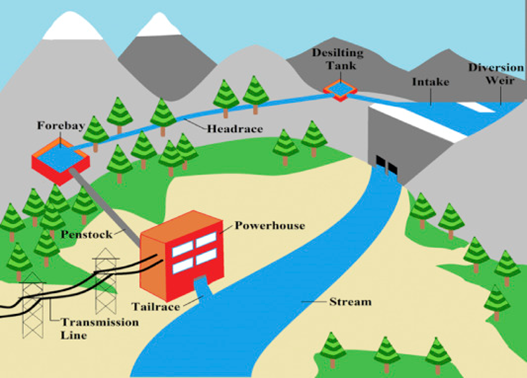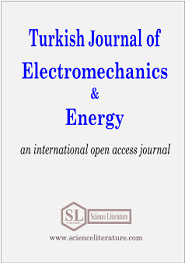
Problems and possible solutions to environmental impacts of small hydropower plants in Turkey
Abstract
Energy is a significant matter in the generation of wealth and plays an important role in economic development which makes energy resources extremely important in the world. Nevertheless, energy generation has caused various kinds of problems. This study, therefore, intended to deal with the solution proposals to the environmental impacts of Small Hydropower Plants (SHPs) in Turkey. To this goal, Turkey's energy sources and demand, and the potential of SHP to meet this demand are briefly reviewed. The main reasons for environmental problems related to the application of SHP projects in Turkey are discussed with some case studies. Most of them are obtained from field reconnaissance studies during administrative law views in Turkey. In this context, the main environmental problems, including environmental flow, cumulative effects of various SHPs in a basin, environmental destruction, etc., are studied. The causes of public backlash to SHPs are especially focused. The main reasons for the public backlash are classified into three categories; related to construction and operation of the plants and cumulative impacts of various SHPs. Depending on the results of various case studies, some possible solutions, to solve the environmental problems and to mitigate the public backlash, are presented at the end of the paper. The main outcome of this study is to provide some solutions to the environmental impacts of SHPs.
Full Text:
PDFReferences
Ö. Yüksek, Reevaluation of Turkey’s hydropower potential and electric energy demand, Energy Policy, 36, 3374-3382, (2008).
I. Arto, I. Capellán-Pérez, R. Lago, G. Bueno, R. Bermejo, The energy requirements of a developed world, Energy for Sustainable Development, 33, 1-13, (2016).
İ. Yüksel, Renewable energy status of electricity generation and future prospect hydropower in Turkey, Renewable Energy, 50, 1037-1043, (2013).
M. Zeleňáková, R. Fijko, D. C. Diaconu, I. Remeňáková, Environmental impact of small hydro power plant: a case study, Environments, 5(1), 12, (2018).
S. Gollessi, G. Valerio, ESHA (European Small Hydropower Association), Hydropower and environment, Technical Report, 1-22, (2015).
T. Abbasi, S. A. Abbasi, Small hydropower’s negative impact on the environment, Renewable and Sustainable Energy Reviews, 15(4), 2134-2143, (2015).
M. Pang, L. Zhang, S. Ulgiati, C. Wang, Ecological impacts of small hydropower in China: Insights from an emergy analysis of a case plant, Energy Policy, 76, 112–122, (2015).
A. M. Mayeda, A. D. Boyd, Factors influencing public perceptions of hydropower projects: A systematic literature review, Renewable and Sustainable Energy Reviews, 121, 109713, (2020).
M. Terin, The attitudes of local people towards hydropower plant: a case study from Turkey, Fresenius Environmental Bulletin, 28(3), 2284-2289, (2019).
C. Koç, A study on the development of hydropower potential in Turkey, Renewable and Sustainable Energy Reviews, 39, 498–508, (2014).
F. C. Kiliç, D. Kaya, Energy production, consumption, policies, and recent developments in Turkey, Renewable and Sustainable Energy Reviews, 11, 1312–1320, (2007).
Ö. Yüksek, K. Kaygusuz, Small hydropower plants as a new and renewable energy Source, Energy Sources Part B 1, 279–290, (2006).
İ. Yüksel, Ö. Yüksek, H. Arman, Hydro energy potential for electricity generating on selected regions in Turkey. In Renewable Energy. Intech Open, (2020).
K. Kaygusuz, Potential and utilization of hydroelectric energy in Turkey, Journal of Engineering Research and Applied Science, 8(1), 1077-1086, (2019).
MENR, Ministry of energy and natural resources. Energy Statistics in Turkey, (2017), website: http://www.enerji.gov.tr, Access date: 21 May 2020.
G. Wilson, Turkey takes important steps toward its renewable energy future, Atlantic Council, (2018), website: https://atlanticcouncil.org/blogs/new-atlanticist/turkey-takes-important-steps-toward-its-renewable-energy-future, Access date: 15 Dec. 2019.
O. S. Kalehsar, Energy Insecurity in Turkey: Opportunities for Renewable Energy. ADBI Working Paper 1058. Tokyo: Asian Development Bank Institute, 24 pages, (2019).
H. Aslan, S. Soguksulu, Run of River Hydroelectrical Power plants (HPPs)'s caused problems and studies of rehabilitation: sample of Trabzon City, Kahramanmaras Sutcu Imam University Journal of Natural Sciences, 20(1), 67-74, (2017).
G. S. Bilotta, N. G. Burnside, M. D. Turley, J. C. Gray, H. G. Orr, The effects of run-of-river hydroelectric power schemes on invertebrate community composition in temperate streams and rivers, PLoS One, 12(2), (2017).
N. Koralay, O. Kara, U. Kezik. Effects of run‐of‐the‐river hydropower plants on the surface water quality in the Solakli stream watershed, Northeastern Turkey, Water and Environmental Journal, 32(3), 412-421, (2018).
İ. Yüksel, Hydropower for sustainable water and energy development, Renewable and Sustainable Energy Reviews, 14, 462-469, (2010).
B.W.H.A. Rupasinghe, S. N. de Silva, Environmental impacts of mini-hydropower projects in Sri Lanka, International Conference on Small Hydropower - Hydro Sri Lanka, (2007).
S. Baskaya, E. Baskaya, A. Sari, The principal negative environmental impacts of small hydropower plants in Turkey, African Journal of Agricultural Research, 6(14), 3284-3290, (2011).
E. Arikan, G. Dieterle, A. Bouzaher, I. H. Ceribasi, D. E. Kaya, S. Nishimura, U. Karamullaoglu, B. Kahraman, Sample guidelines: Cumulative environmental impact assessment for hydropower projects in Turkey, Washington DC; World Bank. No. 76998, pp. 1-84, (2012).
R. Asha, R. Arora, V. B. Mathur, K. Sivakumar, S. Sathyakumar, G. S. Rawat, J. A. Johnson, K. Ramesh, N. K. Dimri, A. Maletha, Assessment of cumulative impacts of hydroelectric projects on aquatic and terrestrial biodiversity in Alaknanda and Bhagirathi Basins, Uttarakhand, Wildlife Institute of India, Technical Report, (2012).
M. Zoebisch, K. M. Cho, S. Hein, R. Mowla, Integrated watershed management - studies and experiences in Asia, Asian Institute of Technology, Thailand, (2005).
V. Novotny, Water Quality: Diffuse Pollution and Watershed Management, 2nd Edition, Wiley, 888 pages, (2002).
H. Ülgen, E. Alp, U. Zeydanlı, B. Kurt, Ö. Balkız, Report on the ecological impacts of small hydropower plants in Turkey and recommendations to the gold standard foundation, Nature Conservation Centre, (2011).
MIDSEFF (Mid-size sustainable energy financing facility), Eligibility Criteria Document, European Bank, (2014), website: http://www.midseff.com/downloads/eligibility_criteria.pdf, Access date: 15 Feb. 2014.
European Bank, Eligibility Criteria for Small Hydro Energy Projects, Procedure and checklist, (2014), website:https://www.ebrd.com/documents/environment/env-emanual-hydro-power.pdf, Access date: 15 Feb. 2020.
URN: https://sloi.org/urn:sl:tjoee52155
Copyright (c) 2020 Turkish Journal of Electromechanics and Energy

This work is licensed under a Creative Commons Attribution-NonCommercial 4.0 International License.

 Indexed in:
Indexed in:
















